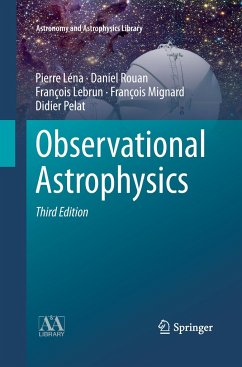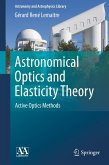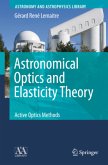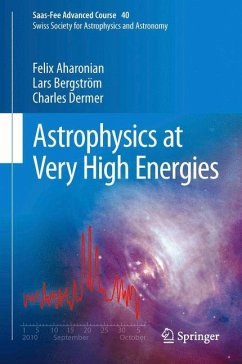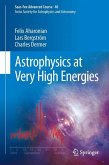This is the updated, widely revised, restructured and expanded third edition of Léna et al.'s successful work Observational Astrophysics. It presents a synthesis on tools and methods of observational astrophysics of the early 21st century. Written specifically for astrophysicists and graduate students, this textbook focuses on fundamental and sometimes practical limitations on the ultimate performance that an astronomical system may reach, rather than presenting particular systems in detail.
In little more than a decade there has been extraordinary progress in imaging and detection technologies in the fields of adaptive optics, optical interferometry, in the sub-millimetre waveband, observation of neutrinos, discovery of exoplanets, to name but a few examples.
The work deals with ground-based and space-based astronomy and their respective fields. And it also presents the ambitious concepts behind space missions aimed for the next decades. Avoiding particulars, it covers the whole of the electromagnetic spectrum, and provides an introduction to the new forms of astronomy becoming possible with gravitational waves and neutrinos. It also treats numerical aspects of observational astrophysics: signal processing, astronomical databases and virtual observatories.
In little more than a decade there has been extraordinary progress in imaging and detection technologies in the fields of adaptive optics, optical interferometry, in the sub-millimetre waveband, observation of neutrinos, discovery of exoplanets, to name but a few examples.
The work deals with ground-based and space-based astronomy and their respective fields. And it also presents the ambitious concepts behind space missions aimed for the next decades. Avoiding particulars, it covers the whole of the electromagnetic spectrum, and provides an introduction to the new forms of astronomy becoming possible with gravitational waves and neutrinos. It also treats numerical aspects of observational astrophysics: signal processing, astronomical databases and virtual observatories.
From the book reviews:
"'Observational Astrophysics' is a textbook for graduate students and astrophysicists. ... The book gives an in-depth overview of everything one might want to know specifically about observations. If you have ever wondered how exactly the X-ray or neutrino telescopes work and what kind of detectors are used there, then this is the right book to look into." (Kadri Tinn, AstroMadness.com, October, 2014)
"The third edition of Observational Astrophysics ... is impressively massive and contains a very large number of things that an astronomer might want to know, from millimetres of precipitable water above some of our favourite sites (less than 1 at the summer south pole to a shameful 7.1 at Kitt Peak) to the meaning of the Rao-Cramer inequality (which applies to the variance of an estimator). ... include an expanded discussion of data analysis and a new chapter on sky surveys and virtual observatories." (Virginia Trimble, The Observatory, Vol. 132 (1229), August, 2012)
"'Observational Astrophysics' is a textbook for graduate students and astrophysicists. ... The book gives an in-depth overview of everything one might want to know specifically about observations. If you have ever wondered how exactly the X-ray or neutrino telescopes work and what kind of detectors are used there, then this is the right book to look into." (Kadri Tinn, AstroMadness.com, October, 2014)
"The third edition of Observational Astrophysics ... is impressively massive and contains a very large number of things that an astronomer might want to know, from millimetres of precipitable water above some of our favourite sites (less than 1 at the summer south pole to a shameful 7.1 at Kitt Peak) to the meaning of the Rao-Cramer inequality (which applies to the variance of an estimator). ... include an expanded discussion of data analysis and a new chapter on sky surveys and virtual observatories." (Virginia Trimble, The Observatory, Vol. 132 (1229), August, 2012)
From the reviews of the third edition: "The third edition of Observational Astrophysics ... is impressively massive and contains a very large number of things that an astronomer might want to know, from millimetres of precipitable water above some of our favourite sites (less than 1 at the summer south pole to a shameful 7.1 at Kitt Peak) to the meaning of the Rao-Cramer inequality (which applies to the variance of an estimator). ... include an expanded discussion of data analysis and a new chapter on sky surveys and virtual observatories." (Virginia Trimble, The Observatory, Vol. 132 (1229), August, 2012)


